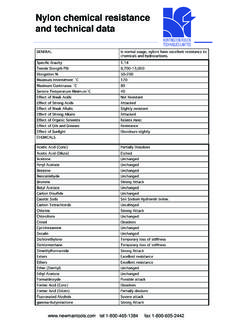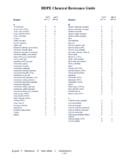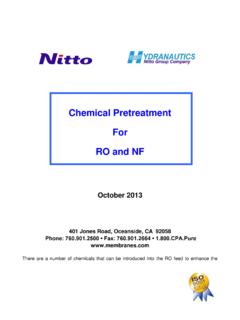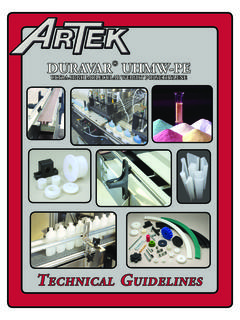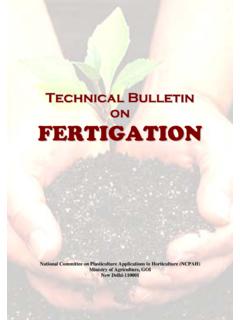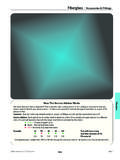Transcription of EFFCT O SEA WATER SID ON CONCRETE
1 EFFCT O SEA WATERSID ON CONCRETEMOrm ma M"~D D CU. S. Army Engawr Vwatery Gezpimn SbatoCORPS OF EN4 GINEERSAppmA11d Ao u;. jApkombuti Scw im Ne AD~~intZ~~~bUTlrck UaCf)~ rJ t!JTE 1 tAMISCELLANEOUS PAPER NO. 6-690 EFFECTS OF SEA WATERON CONCRETEbyBryant MatherDecember 1964U. S. Army Engineer Waterways Experiment StationCORPS OF ENGINEERSV icksburg, VICKSUN. MatherFOREORDThis paper was prepared at the request of Mrs. Katharine Mather,Chairman, Subcommittee MC-B2(5) of Committee MC-B2 on Performance ofConcrete--Chemical Aspects of the CONCRETE Division, Department ofMaterials and Construction, Highway Research Board (HRB), NationalAcademy of Sciences-National Research Council.
2 Subcommittee MC-B2(5)was charged by Committee MC-B2 with the organizing of a Symposium onEffects of Aggressive Fluids on CONCRETE to be held at the 44th AnnualMeeting of HRB, Washington, D. C., January 1965. The paper has beenreviewed and approved for presentation and publication by the Chiefof Engineers, U. S. Army, and by Committee MC-B2 of of the paper was accomplished at the ConcreteDivision, U. S. Army Engineer Waterways Experiment Station, under thedirection of Mr. Thomas B. of the Waterways Experiment Station during preparationof the paper was Col.
3 Alex G. Sutton, Jr., CE. Technical Director wanMr. J. B..In l ib nn m | w n ~ m~ m um " - "* ..IBryant Mather 1 EFFECTS OF SEA WATER ON CONCRETE *byBryant Mather**SynopsisConcrete exposed to sea WATER is wetted by a solution of salts--principally sodium chloride and magnesium sulfate . Damage to CONCRETE , ifit occurs, usually results from failure to use good practices in concreteconstruction, and often is the result of freezing and thawing or wettingand drying as much as or more than the results of the effects of sea wateras such. magnesium sulfate may attack most, if not all, of the constitu-ents of hardened portland cement paste, especially the aluminate constitu-ent; chlorides may promote corrosion of steel; and alkalies may participate* Prepared for inclusion in Symposium on Effects of Aggressive Fluids onConcrete sponsored by Committee MC-B2 on Performance of CONCRETE --Chemical Aspects, at 44th Annual Meeting, Highway Research Board,January 1965; presentation and publication approved by the Chief ofEngineers, U.
4 S. Army, Washington, D. C., 28 October 1964.** Supervisory Research Civil Engineer, Chief, Engineering Sciences Branch, CONCRETE Division, 'U. S. Army Engineer Waterways Experiment Station, CE,Jackson, "-'..- -- : -- " . ""-_____IILILHIB ryant Mather 2in alkali-aggregate Thus, CONCRETE exposed to sea WATER shouldbe made with cement of controlled aluminate content and with nonreactiveaggregate; embedded steel should be well covered by CONCRETE of low perme-ability; and good construction practices should be has been employed in construction exposed to the action ofsea WATER for as long as CONCRETE has been used.
5 ExampleE of CONCRETE usedby the Romans 2000 years ago in structures exposed to sea WATER on theshores of the Mediterranean Sea are still intact. When CONCRETE is to beemployed under conditions in which it will be exposed to the effects of seawater, cognizance should be taken of these effects and appropriate precau-tions taken. However, generalLy, these precautions are not drastic, anddo not involve the selection and use of unusual materials or procedures norcause any significant increase in cost of effects of sea WATER on CONCRETE may conveniently be examined byconsidering, first, the factors characteristic of the sea- WATER exposurethat can affect CONCRETE ; second, the elements of the specific CONCRETE in-volved that may be affected by these factors; third, the consequences ofthe interaction of sea vater with the CONCRETE .
6 And, finally, the precau-tions that should be taken to avoid undesirable performance of the concretedue to its interaction with sea numerals refer to similarly numbered itms in list of referencesat end of this Mather 3 Pertinent Factors in a Sea- WATER ExposureConcrete exposed to sea WATER will be subjected to wetting by anaqueous solution containing principally dissolved sodium chloride and mag-nesium sulfate . The oceans contain on the average about 35 parts per 4thousand ( percent) of dissolved salts. The major cations, Ca ++, Mg++Na+, and K+, exist in sea WATER largely as uncomplexed species.
7 The majoranions include C1-, which is also not strongly complexed, and CO32, HC03-,and S04 , which are. Expressed as milligrams per liter of sea WATER , theprincipal elements present in solution are: chlorine, 19,000; sodium,10,600; magnesium , 1300; sulfur, 900; calcium, 400; and potassium, other elements are probably present, but no others make up more than65 milligrams per liter. The six elements mentioned make up 99 percent ofthe dissolved salts in sea WATER . Although the concentration of dissolvedsolids has been found to vary from place to place, the ratio of any one ofthe major constituents to the total dissolved solids is nearly constant2everywhere.
8 The foregoing information, taken from a recent report, can becompared with the following analysis of a specific sample reported byForrest and of Sea WATER from St. Vincent Gulf, South AustraliaSpecific Gravity of Sea WATER (25 C) = ConcentrationIon (g/l00 ml) Ion (g/l00 ml)Na + Cl + so2- + HCO3 Br" MatherThus, the factors inherent in sea- WATER exposure that should be con-sidered for their effects on CONCRETE are: wetting and drying, chemicalreaction of chlorides, sulfates, and alkalies (sodium and potassium), andin some instances, dissolved car bon elements of CONCRETE that may be affected by wetting or by chemi-cal reaction with chlorides, sulfates, or alkalies include the cement, theaggregates, and reinforcing steel or other metal, if of Continuous Immersion of CONCRETE in Sea WaterConcrete that is totally and continuously immersed in WATER , even ifthe WATER contains dissolved salts such as are found in sea WATER , generallymay be regarded as being in a protected exposure.
9 Continuous immersionusually provides a uniformity of environment with respect to temperatureand moisture content that prevents the immersed CONCRETE from being sub-jected to such deteriorating influences as frost action, volume change dueto wetting and drying, and differential volume change due to moisture con-tent cifferences between the surface and the interior. Continuous immer-sion also tends to reduce the potential for chemical reaction by removingchanges in degree of saturation as a mechanism for the flow into and outof the CONCRETE of solutions containing ions that are capable of attacking'constituents of the CONCRETE , and leaving only concentration gradients asthe means of ingress of such ions.
10 Locher and Pistersl1 note that, unierequal conditions of exposure, the aggressiveness of WATER increases withincreasing concentration of the relevant substances, but that agrc LtiwL-ness is also increased by higher temperatures, higher pressures, wettingand drying, or me-hanical abrasion by fast-flowing or turbulent nceaong cncetraton f te reevat sustacesbutthaBryant Mather 5 Effects of Intermittent Immersion of CONCRETE in Sea WaterMost CONCRETE structures exposed to sea WATER are partially or whollysituated so that they are sometimes immersed in sea WATER and sometimesexposed to the air.










